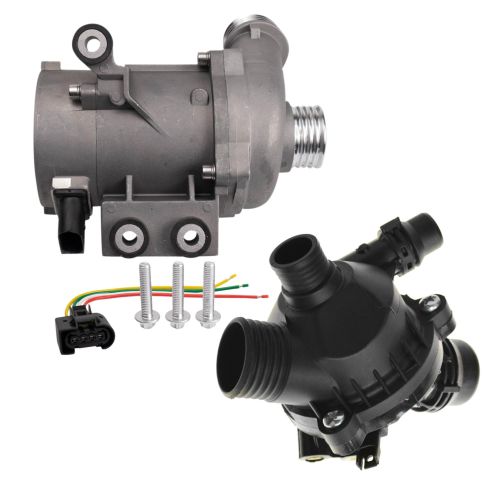1AEEK00657-BMW 2 Piece Cooling System Service Kit TRQ WPA06895
Replaces
2006 BMW 525i 2 Piece Cooling System Service Kit TRQ WPA06895
Product Reviews
Loading reviews
4.67/ 5.0
6
6 reviews
Great
August 12, 2020
Everything worked GREAT. Everything got delivered on time
Great price
November 5, 2020
Bought this after my oem water pump failed, installation was relatively easy. Works great and havent had any problems since!
Perfect oem replacement
November 20, 2020
Shipped quickly, installation was a bit difficult with getting the hoses where they belong but its worked great ever since my oem pump failed
U guys r awsome
October 6, 2021
Thanks yes it work well in my car I sure appreciate it very for the fast delivery of ur parts
Great product and customer service support.
November 11, 2021
Price is great and delivery was quick. Product fit perfectly but unfortunately would not work on my 2011 BMW 328i xdrive. After installation, cpu would get a fault for speed match error from the pump. After further investigation, had to replace with the genuine OEM BMW pump. I'm assuming there is some crazy ratio difference or something funny that BMW set there pump speed to so would have to buy genuine BMW parts. 1A Auto was very understanding and tried to help me alleviate the issue and even allowed me to return parts for full refund.
February 14, 2022
Good parts excelente price
Customer Q&A
Does this come with new replacement bolts?
September 4, 2018
10
Hello, it is necessary to reuse your original hardware, as new hardware is not included with this item.
Please let us know if we can assist you further. Thank you!
September 4, 2018
Zach B
Does this fit a 2007 BMW Z4 3.0I?
June 19, 2019
10
Yes, according to the information you provided, this part will fit your vehicle.
June 19, 2019
Curtis L
How do we return the parts if they dont fit or we dont want it no more?
July 14, 2020
10
Hello,
You would want open up a return request.
Thank you,
Corey
July 14, 2020
Corey M
My water pump failed after 2 months. Can I return it and get my money back?
June 11, 2021
10
We are unable to take parts back outside of 60 days but we can send a replacement under the lifetime warranty.
June 11, 2021
Emma F
10
An item must meet one of the following conditions and be returned within 60 days from delivery to be eligible for a return:
The item received was incorrect
The item was unintentionally purchased
The item is no longer needed
The item arrived damaged
The item has a defect(s)
The item failed during intended use under warranty
The item does not fit your vehicle
1A Auto is not responsible for any damage, labor, return shipping costs, or any other inconveniences incurred.
June 12, 2021
Cristina P
BMW is a registered trademark of Bayerische Motoren Werke AG. 1A Auto is not affiliated with or sponsored by BMW or Bayerische Motoren Werke AG.
See all trademarks.

















